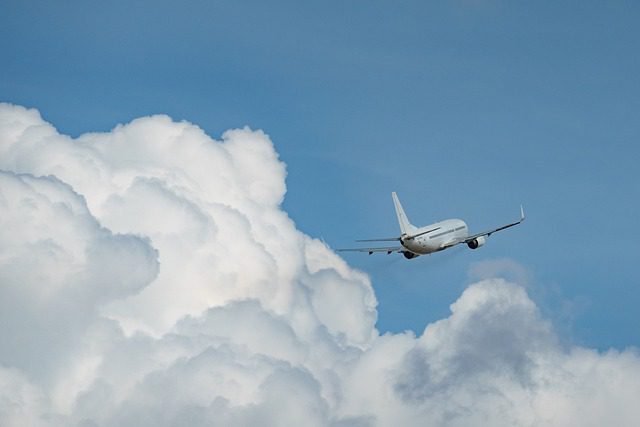Air Travel with Hearing Loss

For those with hearing loss any travel is stressful. However, air travel presents many extra challenges. Nowadays, major airports are huge, confusing places with plenty of noise, echoes, and scattering sound. In such environments even a mild hearing loss can have disabling and anxiety-raising effects.
Typically, hard-of-hearing people struggle to understand speech in background noise. And so, travelers with hearing loss must find ways to minimize the communication and emotional challenges that airports present. Although hearing aids are said to be of little help in such settings, it is very important not to miss or misunderstand messages, flight information or requests from TSA officers or airline personnel.
Positive experience through preparation
Besides making sure to pack all the appropriate hearing & communication equipment, batteries, rechargers, device desiccants, hearing aid or cochlear implant storage containers and cleaning materials, here are some tips to help smooth air travel with hearing loss:
- Avoid extra stress by preparing well ahead of time.
- Anticipate rapid changes and the drama and confusion they can cause,
- Download the airline apps! Many people have shared that this was the best thing they did to stay informed about gate changes and flight status.
- Limit surprises. Visit the website Home Pages of all airports along the travel routes. Get a feeling for the layout of the airport by checking the site maps. Is there a lot of construction going on? This contributes to accelerated fatigue because of increased noise levels and usually longer walks throughout the terminals. Might it be wise to arrange for wheelchair or mobile cart transport to save energy and reduce stress?
- Check the Accessibility Pages for hearing loss accommodation, such as captioned TVs and paging systems, hearing loops, amplified phones, or access to video phones for Sign Language interpretation? It is best to be forewarned. However, it is a good strategy to take along any assistive technology needed to improve communication and reduce stress. Assistive microphones, noise-reducing headphones and smartphone apps come to mind. I never travel without my noise-reducing headphones.
- Worried about TSA? Follow their online instructions while packing. Yet, the actual check point at the airport is where people with hearing loss often experience anxiety and undue stress. They are afraid of getting into trouble by making mistakes or of giving incorrect answers due to hearing-related misunderstandings. Check out the TSA Cares program on their website. It offers assistance during the security check. Be sure to register with them ahead of time as stated on the website. Although the procedure will be the same, having someone bridge the communication gap increases self-confidence and reduces apprehension.
- Check on airport volunteer programs. Volunteer guides can be a great comfort, especially for those who travel alone. They answer questions. They help people find their way through the airport maze and for those with hearing loss they could provide extra listening support. However, the service must be booked ahead of time. Also, volunteers do not provide wheelchair transport. That’s a different service that also calls for an advanced reservation. Do you need both services?
- Get a Sunflower Lanyard. The sunflower is fast becoming the international symbol for “invisible or hidden” disabilities, such as hearing loss. These are usually available free of charge at airport information desks, or you can purchase your own version online. People do not have to disclose their hidden disability to obtain a lanyard. The sunflower alerts the staff that a traveler has a hidden challenge and might need more time, for instance. But it does not give special favors or privileges.
In the end…
Air travel with hearing loss brings extra communication challenges and stresses. Put yourself in charge of the process by starting early with preparations. Limit surprises! Research and make use of assistive technology and other helpful resources. After that, may you enjoy on-time departures and landings, smooth flights, and clear blue skies wherever you go.
